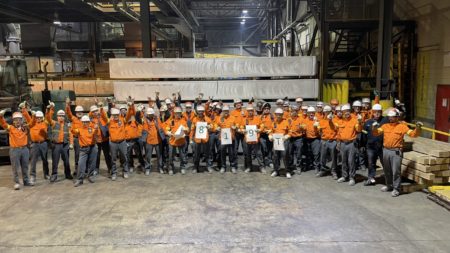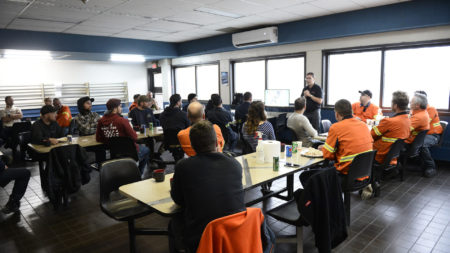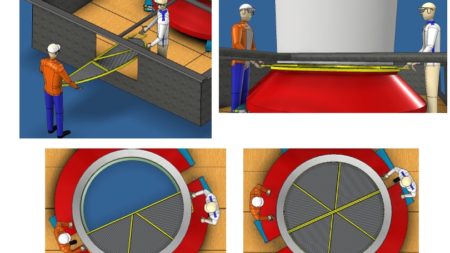Record Ingot Production at Grande-Baie Works

During the week of December 8 to 15, Grande-Baie Works set a new production record with 3,819 metric tonnes of aluminium ingots cast, surpassing the previous record of 3,647 tonnes set in 2017.
This achievement—a great source of pride for the team—was made possible by several factors:
“The right things were done at the right time. In terms of maintenance, everything was well organised and orchestrated for seamless interventions with no delays. Our equipment was very reliable. Sure, the customer’s order book was an advantage, but the skill and teamwork of the DC and hot metal operators led to these exceptional results,” says Louis-Denis Tremblay, DC Supervisor.
At all times, the health and safety of the facilities remained a priority. “We never take shortcuts. When we decide to take on a challenge together, we make sure that we don’t rush, and that it can be done safely,” he continues. “Early in the week, we saw that the conditions were there for us to break a record. That’s when we decided to go the extra mile and make it happen. Everyone pitched in, and it made for a great team spirit.”
Excellent communication, teamwork and the recent implementation of the Rio Tinto Safe Production System (RTSPS) are having a positive impact when problems do arise. “We’ve seen a significant improvement in uptime and a reduced number of problems over the medium and long term. The SPCT team helps analyse problems and identify corrective actions for the future and assists operators in implementing standards.”
The efforts of the metallurgical team were also remarkable. Excellent work was done on the metal overlay, which ensures better control of the process by respecting the recipe parameters and the stability of the metal.
Achieving this new record at Grande-Baie Works is motivating for the entire team. “A good production rate is what we strive for as a plant. This confirms our position as a leader in the production of green aluminium. The benefits for the region are considerable,” concludes Louis-Denis Tremblay.


